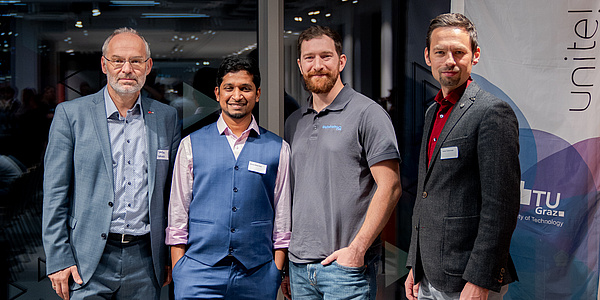Nuclear Fusion: How Fast Does Plasma Rotate?
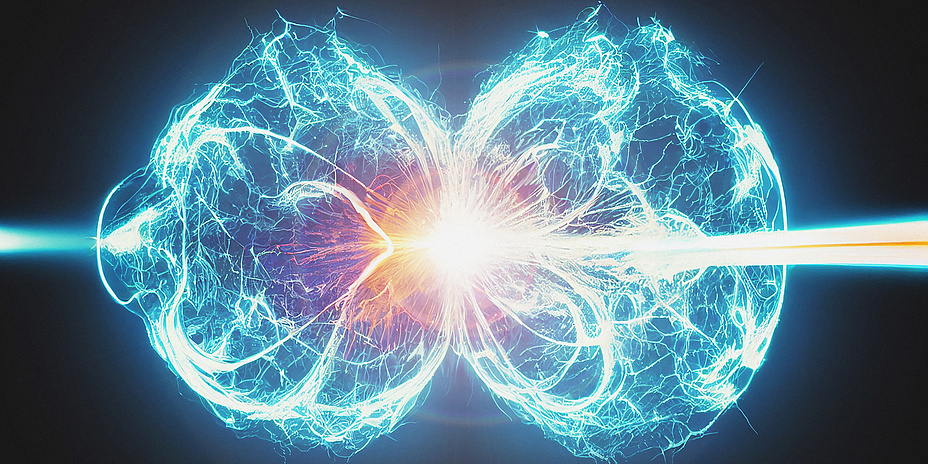
A veil of mist darkens the sky. The grey stretches densely through the landscape. Only single, deft rays of sunshine whiz through small holes in the clouds. Everything is gloomy and grey. How ill-timed. Bright sunshine would be so much more fitting today. More fitting to talk about Christopher Albert’s field of research: nuclear fusion. Just like the sun does. And all the other stars in space.
Generating energy cleanly, safely and sustainably
If scientists in this field have their way, nuclear fusion will generate clean, sustainable and, above all, safe electricity in the future. Two branches of research can be distinguished: fusion by means of magnetic confinement and inertial (confinement) fusion. In the field of inertial fusion, US researchers announced a scientific breakthrough at the end of 2022. However, in the second important branch – fusion by magnetic confinement – we are at a very similar point, says theoretical plasma physicist Christopher Albert from TU Graz: “The international research community is also theoretically ready. The only difference is that we’ve used a deuterium/deuterium plasma for the best experimental results so far, and calculated the reaction with the addition of tritium – but the output is the same as that of our colleagues in the USA. Actual deuterium-tritium experiments using magnetic confinement were already close in the 1990s.”
Nuclear fusion is what’s behind it
In contrast to energy generation by means of nuclear fission, as used in conventional nuclear power plants, nuclear fusion does not use heavy and slowly decaying uranium, but a mixture of the light hydrogen isotopes deuterium and tritium. They are fused into helium-4 with a high energy input. In order to be able to fuse the two atomic nuclei, which actually have a repulsive force towards each other because they are each positively charged, the starting material is heated to 100 to 250 million degrees Celsius. In the process, the material changes into a plasma state – the electrons and the atomic nuclei separate. To ensure that the plasma remains stable, it is enclosed in a magnetic field. Any contact with the container walls would immediately cause the plasma to cool down too much. But this would not pose a safety problem, because in contrast to nuclear fission, where the reaction would become uncontrollable, the reaction in nuclear fusion simply stops. “We have the exact opposite problem: it takes enormous energy to keep the reaction stable,” Albert explains. And this is precisely the biggest problem in research at the moment. How can the fusion reaction become self-sustaining? In other words, can it be sustained without the addition of further energy?
Tokamaks and stellarators
The magnetic field that captures the plasma is mainly generated in two differently shaped reactors: tokamaks and stellarators.
Tokamaks are axisymmetrical and form a closed, donut-shaped circle (torus). Electric current flows along its walls and the magnetic field lines run in a spiral around the ring.
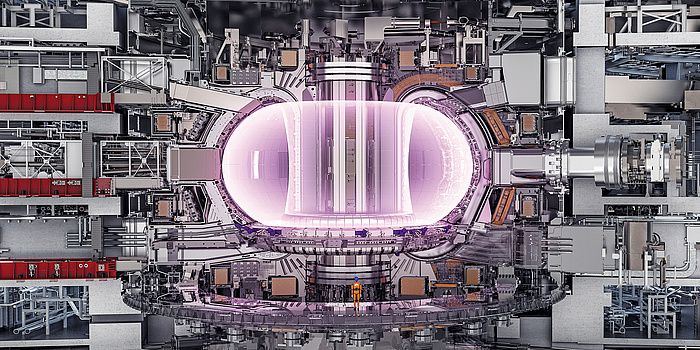
Stellarators are non-axisymmetrical and have a spirally wound, very complex shape that is also closed into a ring. The magnetic field is generated entirely by current-carrying coils around the ring.
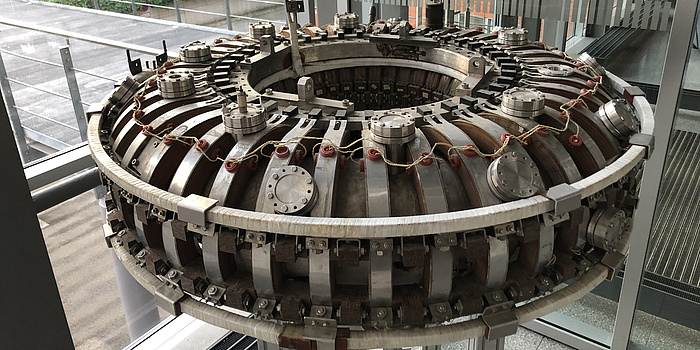
Research contribution of TU Graz
These geometries differ significantly from each other and are two entirely different research directions within magnetic fusion, which are, however, united at TU Graz. “We have found our niche here,” reveals Christopher Albert. “At our institute, historically, there have always been experts in stellarators, the more complex of the two forms. We have now been able to transfer our knowledge in this regard to tokamaks and can run simulations in both geometries.” TU Graz is involved in the major European projects in the field of nuclear fusion through the research group at the Institute of Theoretical and Computational Physics. This particularly concerns the collaboration with the Max Planck Institute for Plasma Physics with the ASDEX-upgrade tokamak and the Wendelstein 7-X stellarator. The ITER tokamak, which is meant to generate substantial amounts of fusion energy for the first time, is currently being built in southern France on a much larger scale and with superconducting magnetic coils. If ITER is run successfully, the DEMO demonstration power plant will be ready for construction. This power plant will then store electricity from nuclear fusion in the grid for the first time.
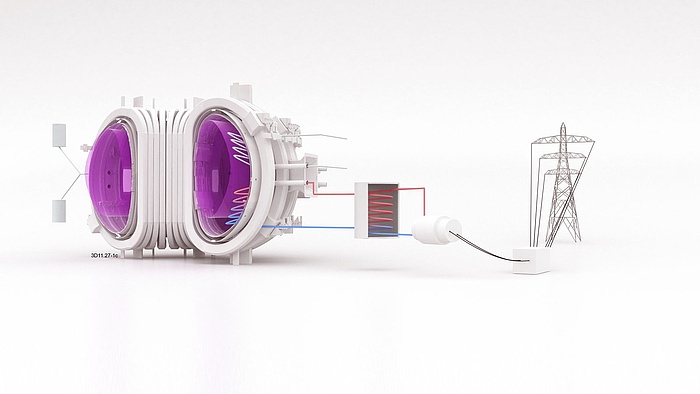
Up to this point, however, there is still much to be done on the research side. At TU Graz, one of the projects specializes in the rotation of the plasma in the reactor and, based on the data obtained from the experiments, simulates how it must rotate in order to remain stable.
But sophisticated physics is not enough, as Christopher Albert explains: “There are very many different research questions that still need to be answered. For example, in the area of wall materials, for which tungsten is used today. Or in superconductors or in control technology. New additive manufacturing production techniques such as 3D printing could make building complex geometries much easier and cheaper. So it’s worthwhile for researchers from very different fields to look at the issues and possibly start their own projects.”
Kontakt
Christopher ALBERT
Institut für Theoretische Physik - Computational Physics
Petersgasse 16/II
8010 Graz
Tel.: +43 316 873 8182
albert@tugraz.at


